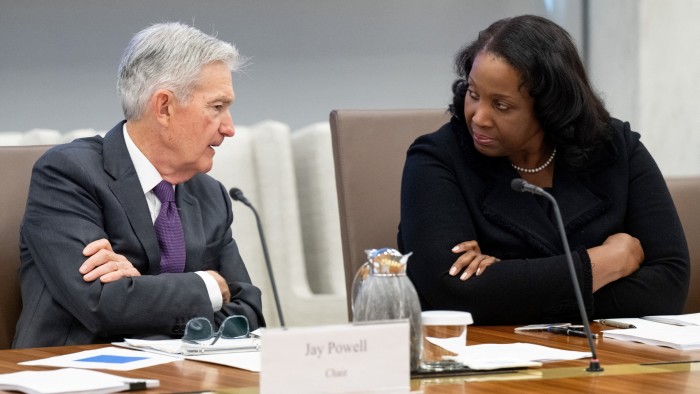Unlock the White House Watch newsletter for free
Your guide to what Trump’s second term means for Washington, business and the world
Donald Trump’s attempts to force the Federal Reserve to cut interest rates in a bid to lower the US government’s financing costs and juice the economy could backfire spectacularly, economists have warned.
The president has hit Fed chief Jay Powell, whom he has called a “moron” and a “stubborn mule”, with a barrage of criticism, insisting the central bank should lower interest rates by as much as 3 percentage points from their current range of 4.25-4.5 per cent.
Trump’s attacks reached a new pitch on Monday evening, when he moved to fire governor Lisa Cook, whom his administration has accused of lying on her mortgage applications. Cook, who has not been charged by prosecutors, has said she plans to fight against the decision in court.
The president was already moving towards having more like-minded officials on the Fed’s board before his move against Cook.
Trump nominated staunch ally Stephen Miran to fill a seat that Adriana Kugler vacated this month. Michelle Bowman and Chris Waller, whom Trump appointed during his first term, also back his calls for lower rates.
Powell has said he will remain chair until his tenure in the top job ends next May, but it is not yet clear whether he will serve out his full term as a governor, which runs until January 2028.
Economists say that, should Trump acolytes be able to form a majority on the Fed’s seven-person board of governors, the central bank’s credibility could be eroded leading to higher long-term borrowing costs.
“It is clear that we are heading back to a world in which the Fed is far more politicised,” said Stephen Brown at Capital Economics.
“That risks greater uncertainty about the interest rate outlook and, by extension, higher long-term interest rates.”
Tuesday’s market moves, in which the gap between two and 30-year Treasury yields reached the widest level in three years, underscored those concerns. The US dollar also slipped 0.2 per cent against a basket of half a dozen peers.
Priya Misra, a portfolio manager at JPMorgan Asset Management, said if Trump is able to put his allies on the Fed’s board, it “could lead to the risk of an erosion of Fed independence and this is what explains the immediate reaction of a weaker dollar and a steeper curve as inflation risk should rise.”
Some economists said graver consequences were possible. Blake Gwinn, head of US rates strategy at RBC Capital Markets, noted: “We are only a small handful of further developments away from a complete paradigm shift where the president essentially sets monetary policy”.
He added: “Markets have to start seriously considering the consequences for longer-run inflation expectations, future rate volatility, term premium, foreign demand for US assets.”
While the Fed’s benchmark federal funds rate reflects overnight borrowing costs between US lenders, the weighted average maturity of the country’s outstanding debt is around six years, according to a closely followed measure produced by the Treasury department.
That means it is longer-term rates that will have a greater effect on the US’s borrowing costs.
Claudia Sahm of New Century Advisors, formerly an official at the Fed, said that if long-term borrowing costs did begin to rise more aggressively, the central bank could use its crisis-era bond-buying programmes to bring them down.
Many economists also noted that it is still too soon to judge the effects of Trump’s assault on the central bank. Many experts say the confrontation is heading for a fierce legal battle that could end up in the Supreme Court.
White House spokesperson Kush Desai said in a statement that Trump had “exercised his lawful authority to remove a governor on the Federal Board of Governors for cause”.
“The removal of a governor for cause improves the Federal Reserve Board’s accountability and credibility for both the markets and American people,” Desai said.
Trump and the Fed both said on Tuesday they would abide by any court decision.
Misra noted that “there are institutional protections to Fed independence” and expected the central bank’s policy “will be more a function of the labour market and non-tariff or any second-order inflation rather than the political demands”.
The US’s role as the global reserve currency could also help insulate the country’s debt markets, which remain the biggest and deepest in the world.
“When you look at the available bond market, there is nowhere else to go,” said Mark Blyth, of Brown University.
